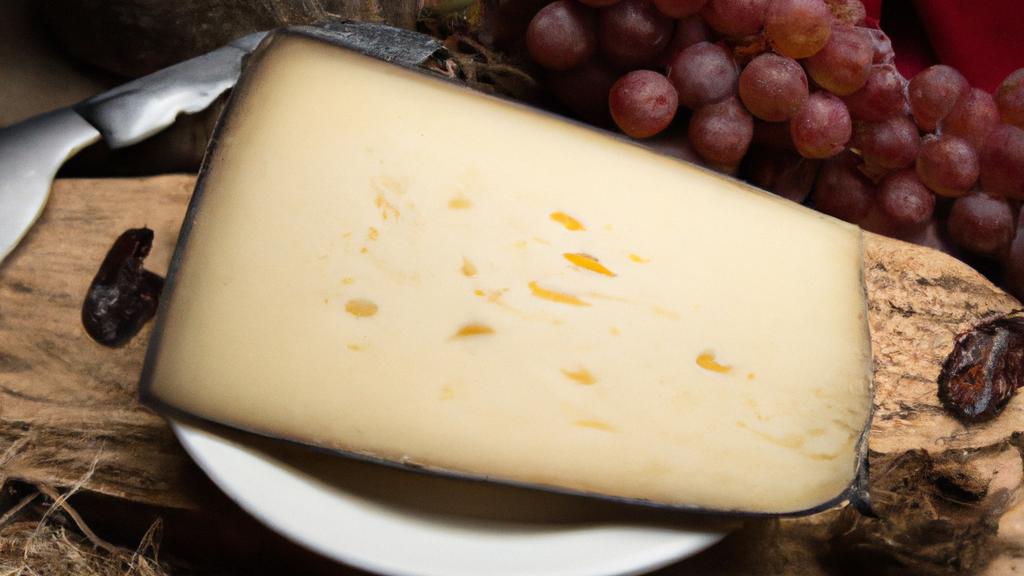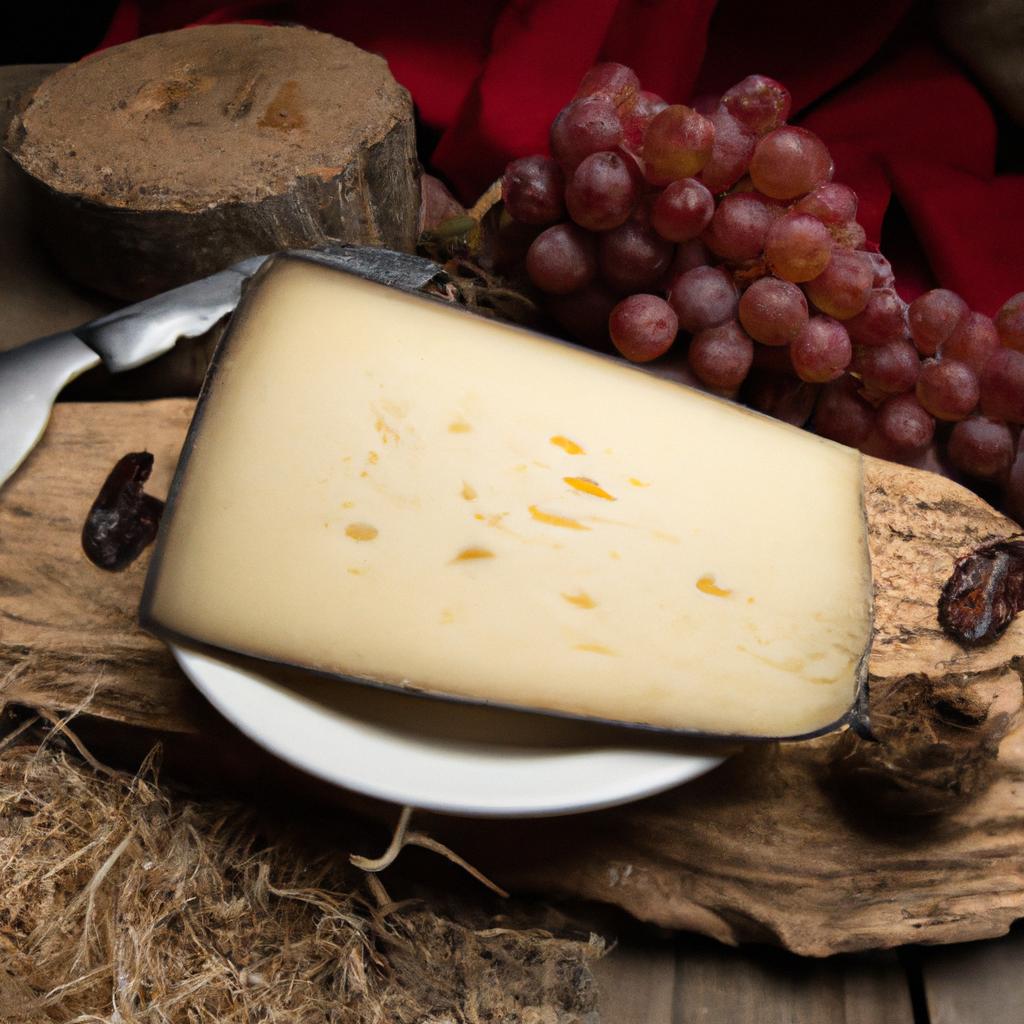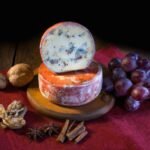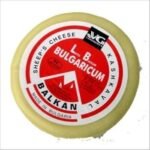
Shanklish is a remarkable cheese worthy of a comprehensive review due to its distinct qualities that make it stand out in the world of cheese. This dairy delight, a traditional cheese native to the Levant region – primarily Syria and Lebanon – boasts a rich history, carefully preserved across generations.
To understand the peculiarity of Shanklish, one must delve into its method of production. It all begins with cow’s or sheep’s milk curdled and set to ferment. This fermentation, being the initial flavor developer, is followed by shaping the cheese into bumpy globes ranging from the size of an egg to that of a tennis ball. Wrapped in cheesecloth, these globes are left to dry and harden for about a week.
Shanklish then undergoes an additional level of fermentation – it is rolled in thyme or anise and left to age for further two to three months. This rigorous aging process creates Shanklish’s unmistakable flavor profile, resulting in a blue mold on its surface, much like that seen on Roquefort or Stilton. This process not only retards bacterial growth but also imparts several distinguishing properties to the cheese.
- A distinct flavor spectrum: The two-step fermentation process gives this cheese a unique tangy, vaguely spicy taste that often surprises first-time tasters with its complexity. Rich, pungent, and slightly fermented, it bears the intensity of blue cheese with a twist of the Mediterranean.
- Texture and appearance: Shanklish cheese sports a rough, hard exterior, usually coated with a fine light blue mold. However, the inside is moderately creamy and crumbles effortlessly.
- Nutritional value: Like other cheeses, Shanklish is packed with protein, but its fermentation process also produces probiotics, beneficial bacteria that support digestive health.
Lastly, the world of Shanklish is vast and varied – it carries different nuances based on where it is made. The variant from Homs, Syria, for example, is made with anise and rolled into larger balls, while the variant from Tartus, Syria, is smaller in size, made without anise, and coated in dried chili flakes instead. So, every experience with Shanklish is an exciting journey into rich cultural histories and refined culinary artistry.
Welcome to our exciting quiz on Shanklish Cheese from Israel! How well are you acquainted with this traditional fermented cheese? This quiz will challenge your knowledge of its origins, culinary uses, and other unique aspects. Are you ready to put your information to the test? Start now!

Exploring the Intricacies of Shanklish: Ingredients, Properties, and Varieties
Shanklish, a fascinating delicacy from the Eastern Mediterranean region, brims with diverse textures and complex flavors. Known for its peculiar making process and unique properties, Sanklish is a vivid epitome of the depth and versatility of cheese products. Similar to the French Roquefort, this cheese variant primarily comprises cow and sheep milk, nurturing a plethora of microbial flora that nudges its multifaceted flavor and property. However, Shanklish stands apart in its extended curing process, which enriches it with a distinctively pungent flavor and a coarse texture.
The method of preparation of Shanklish involves a two-step fermentation process. Initially, local bacteria are added to the milk, leading to the formation of fresh cheese or “areesh.” This “areesh” is then air-dried, hand-rolled into balls, and coated with za’atar or a mixture of thyme and sumac – a traditional Middle Eastern herb mix. Notably, it takes a prolonged curing period of one to three months in a dry and cool environment to develop the Shanklish’s striking characteristics. The finished product is encapsulated by a unique hardened, crumbly crust and a sharp, resonant flavor that may vary depending on the curing duration and microbial strains used. Amid the complex labyrinth of its flavor profile, the taste may transit from mildly tangy to fiercely spicy, making Shanklish an adventure for curious palates.
In terms of its varieties, the blue-veined type is a spectacle in itself. Prepared using Roqueforti penicillium strains to spur its blue moulds, this variant flaunts a pronounced, robust flavor. And then there’s the red-veined variety showcasing nutty, creamy notes, made by inciting B. Linens bacteria into the aging process. The size of the Shanklish balls also varies from one region to another, ranging from the size of a table tennis ball to that of a large apple. Additionally, the application of Shanklish is also diverse, from being a centerpiece in salads and sandwiches to being a complementary ingredient in mezzes and spreads.
- Cow Milk Shanklish: Prepared predominantly using cow milk, this variant is creamier and milder in flavor as compared to its counterparts. It is often preferred in salads and lighter dishes.
- Sheep Milk Shanklish: This variant packs a punch in terms of flavor. The robustness and sharpness of sheep milk Shanklish make it a popular choice for enhancing the weight of sandwiches and mezze platters.
Discover the Flavors of Shanklish: A Lebanese Cheese Gem
Nestled in the heart of the Middle East, Lebanon stands proud as a culinary paradise renowned for its rich history, culture, and mouthwatering cuisine. Among the many delights that this region has to offer, cheese aficionados have long been captivated by Shanklish, a traditional cheese with a distinctive flavor profile that captures the essence of Lebanon.
Shanklish, also known as shenklish or shenkleesh, is produced mainly in the northern regions of Lebanon, particularly in the Akkar and Tripoli districts. This cheese has a long history, dating back to the time when the Levant was under the rule of the Ottoman Empire. Although it is commonly associated with Lebanon, it can also be found in Syria and parts of Jordan.
The production process of Shanklish begins with the combining of fresh cow’s or sheep’s milk, or sometimes a combination of both, with an added dose of lactic acid bacteria. The curds are then hand-formed into small balls, which are traditionally aged in underground caves. These caves provide the perfect conditions for the cheese to mature, as they maintain a cool and humid environment, allowing Shanklish to develop its characteristic flavor and texture over time.

What sets Shanklish apart from other cheeses is its pungent aroma and tangy, salty flavor. The aging process gives this cheese its distinctive earthy and slightly smoky taste, with a crumbly yet creamy texture. Shanklish is often coated with a mixture of thyme, sumac, and sometimes red chili flakes, adding another layer of complexity to its flavor profile. Its versatility shines through in various culinary applications, whether crumbled over salads, melted into warm dishes, or enjoyed on its own with freshly baked bread and olives.
- Shanklish is a traditional cheese that originates from Lebanon but can also be found in Syria and parts of Jordan.
- It is made from cow’s or sheep’s milk, or a combination of both.
- Shanklish is known for its pungent aroma, tangy, salty flavor, and crumbly yet creamy texture.
- The cheese is often aged in underground caves to develop its unique flavor profile.
- It is commonly enjoyed crumbled over salads, melted into warm dishes, or served with bread and olives.
- One of the critical aspects of Shanklish cheese is its aging process, which often takes up to a month, adding to its rich flavor.
- The preparation of Shanklish cheese includes the step where it’s usually covered with the za’atar spice mix. This Middle Eastern spice gives a distinctive flavor to the cheese.
- Shanklish cheese comes in various forms, but you can often see it in balls of about 6 cm in diameter.
- Contrary to some belief, Shanklish cheese does not originate from Israel, but it’s widely enjoyed and produced there.
- Shanklish cheese is often served with additional ingredients like diced tomatoes, fresh herbs, and olive oil, enhancing its flavor and offering a delightful culinary experience.
- While many other cheeses are made to consume fresh, Shanklish cheese is not one among them. It requires an aging process to develop its characteristic taste and texture.
- Shanklish cheese is versatile when it comes to the type of milk used. It can be manufactured using goat’s milk, cow’s milk, or a combination.
The Art of Crafting Delightful Dishes with Shanklish Cheese
Originating in the Middle Eastern region of Syria and Lebanon, Shanklish is a distinctive type of cheese that brings an intensely aromatic flavour to your palate. Traditionally, it is made from either sheep or cow’s milk and it’s known for its powerful, salty-sour taste, further enhanced by the coating of herbs such as thyme or Aleppo pepper, which gives the cheese a unique reddish color. To bring out its rich, tangy flavour, we introduce two sublime recipes that champion the Shanklish cheese – the delectable Shanklish Salad, and a warm comforting Shanklish Omelette.
The Shanklish Salad, a vibrant medley of fresh vegetables and herbs, is an unmissable summer delight. The recipe is straightforward and requires the following ingredients:
- 200g Shanklish cheese
- 2 medium-sized ripe tomatoes
- 1 small red onion
- Fresh parsley, mint and cilantro as desired
- Juice of one lemon
- A drizzle of extra virgin olive oil
- Salt and pepper for seasoning
Start by roughly crumbling the cheese into a bowl. Dice the tomatoes and onion and add them to the bowl along with the chopped herbs. Season with salt, pepper, lemon juice, and olive oil and mix until well combined. The fresh, tangy burst of Shanklish atop the cool, crisp vegetables makes this salad a refreshing dish full of Middle Eastern charm.
Moving on to our second recipe, the Shanklish Omelette offers a heartwarming fusion of velvety eggs and Shanklish cheese. Boasting a robust profile due to the cheese’s herby coating, the Shanklish omelette can easily become a staple in your breakfast menu. Begin with whisking 3-4 eggs in a bowl, add salt, pepper and 100g of crumbled Shanklish, stirring all the elements together. Cooking this mixture in a skillet on medium heat while occasionally stirring will result in a fluffy, appetising omelette. The Shanklish Omelette is not only simple to prepare, but it also combines the universality of eggs with the regional taste of Shanklish, making this dish intriguing to even the most seasoned palates.
Whether you are looking for a light, refreshing meal or a wholesome, satisfying breakfast, Shanklish cheese allows you to dive into the culinary wonders of the Middle Eastern cuisine. Its unparalleled taste and aromatic notes ensure these recipes offer an experiential journey, taking the reader from their kitchen to the mountainous regions of Syria and Lebanon one bite at a time.
Unraveling the Delightful Culinary Combinations for Shanklish
Shanklish, a sphere-shaped, mold-ripened cheese imbued with a unique taste, is a treasure of the Middle Eastern cuisine. Originating from Lebanon and Syria, this cheese epitomizes the region’s food culture with its subtle attributes of pungency, creaminess, tanginess, and a slightly crumbly texture. Crafted typically from cow’s or sheep’s milk, the cheese reaches the perfection of its flavors after a careful maturation process. Let’s embark on a sensory exploration of the best matching wines and dishes that enhance the delightful note of Shanklish.
Divining the Perfect Wine Pairings
Given Shanklish’s high salt content and intense flavor, it begs for a vibrant and robust wine to balance these bold characteristics. A versatile cheese like Shanklish has the potential to be paired with an array of wines, conjuring the magic of flavor and aroma.
- A hearty red wine, perhaps a Cabernet Sauvignon or an Australian Shiraz with their deep-fruit flavors and notes of spice could offset the potent, ripe flavors of Shanklish beautifully. These wines’ firm tannins and robust structure can tackle the cheese’s strength and complexity, creating a balance between flavors.
- Chenin Blanc can be a good choice for those preferring white wine. Its apple, quince, and pear flavors accompanied by a refreshing acidity can mellow the cheese’s overwhelming pungency and provide a harmonious mouthfeel.
Satisfying Syndicate of Dishes
Being an integral part of Levantine cuisine, Shanklish can be used in various traditional and contemporary dishes. The cheese blends excellently with olive oil, creating a rich base for salads and spreads. Combining it with freshly cut tomatoes, onions, and a sprinkle of za’atar in a salad creates a refreshing yet flavorful dish. The readiness of Shanklish to crumble makes it an ideal cheese for baking, adding a salty and tangy layer to bread and pastries. It can also accompany grilled meats, creating a nuanced flavor symphony.
Ultimately, the subtle art of pairing Shanklish with wines and dishes revolves around bridging unique gastronomic elements. Practices may vary and, ultimately, it’s all down to personal preference, thus opening infinite possibilities and promising an exciting adventure for all food connoisseurs.
Similar Cheeses for Shanklish
Shanklish is a traditional Middle Eastern cheese known for its bold flavors and crumbly texture. If you are a fan of Shanklish and are looking to explore similar cheeses with unique characteristics, here are a few options worth trying:
1. Labneh: Labneh is another Middle Eastern cheese that shares some similarities with Shanklish. It is made by straining yogurt, resulting in a creamy and tangy cheese. While Labneh is not as crumbly as Shanklish, it offers a smooth and spreadable texture that makes it a versatile ingredient in various recipes.
2. Feta: Feta cheese is a well-known cheese originating from Greece. It is made from sheep’s milk or a combination of sheep and goat’s milk. Feta has a firm and crumbly texture, similar to Shanklish, and offers a slightly salty and tangy flavor profile. It is commonly used in salads, pastries, and as a topping for various dishes.
3. Queso Blanco: Queso Blanco, which translates to “white cheese” in Spanish, is a fresh cheese typically made from cow’s milk. It has a mild and slightly salty flavor with a soft and crumbly texture. While Queso Blanco may not have the same bold flavors as Shanklish, it can be a great alternative for those who prefer milder cheeses.
4. Halloumi: Halloumi is a popular cheese from Cyprus that is known for its unique characteristics. It is a semi-hard cheese made from a mixture of goat, sheep, and sometimes cow’s milk. Halloumi has a chewy texture and a slightly salty flavor. What sets it apart is its ability to be grilled or pan-fried without melting, making it a wonderful addition to salads or enjoyed as a grilled cheese.
These cheeses provide an opportunity to explore different flavors and textures while still capturing some of the qualities that make Shanklish so unique. Whether you’re trying them in traditional Middle Eastern dishes or experimenting with their use in other recipes, these cheeses are sure to add a delightful touch to your culinary adventures.
– Despite their differences, these cheeses share some similarities with Shanklish in terms of texture and flavor.



